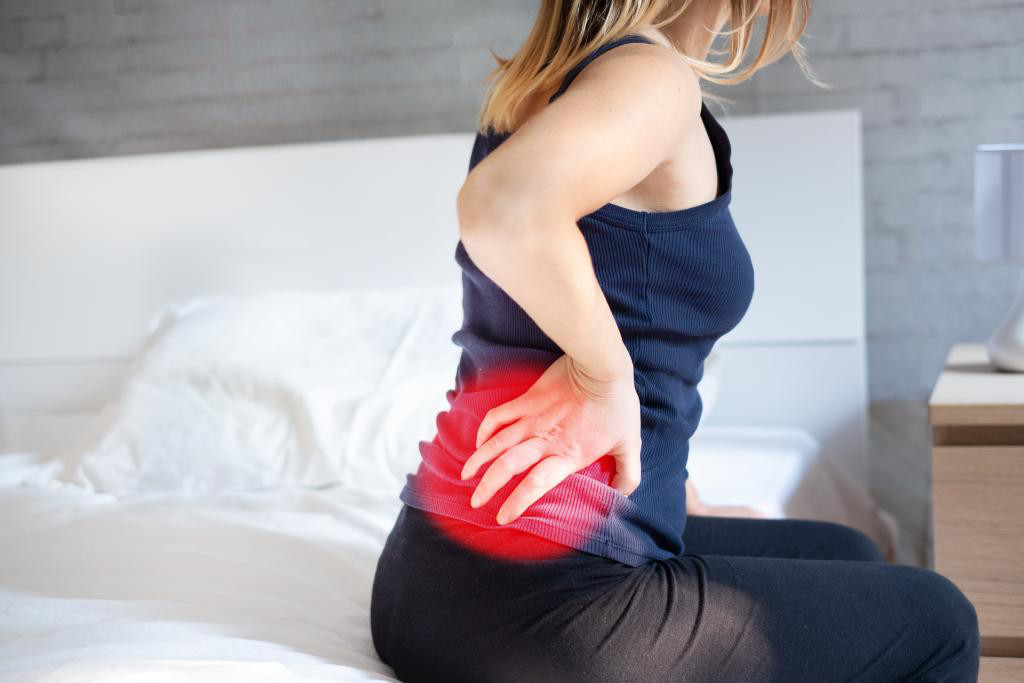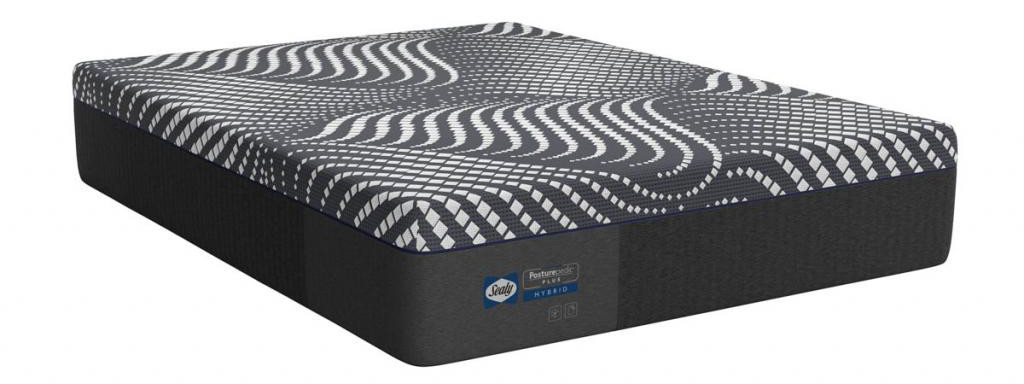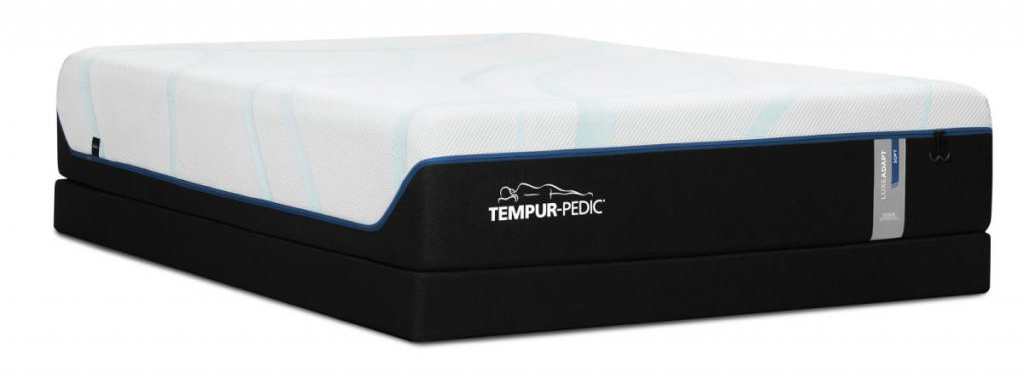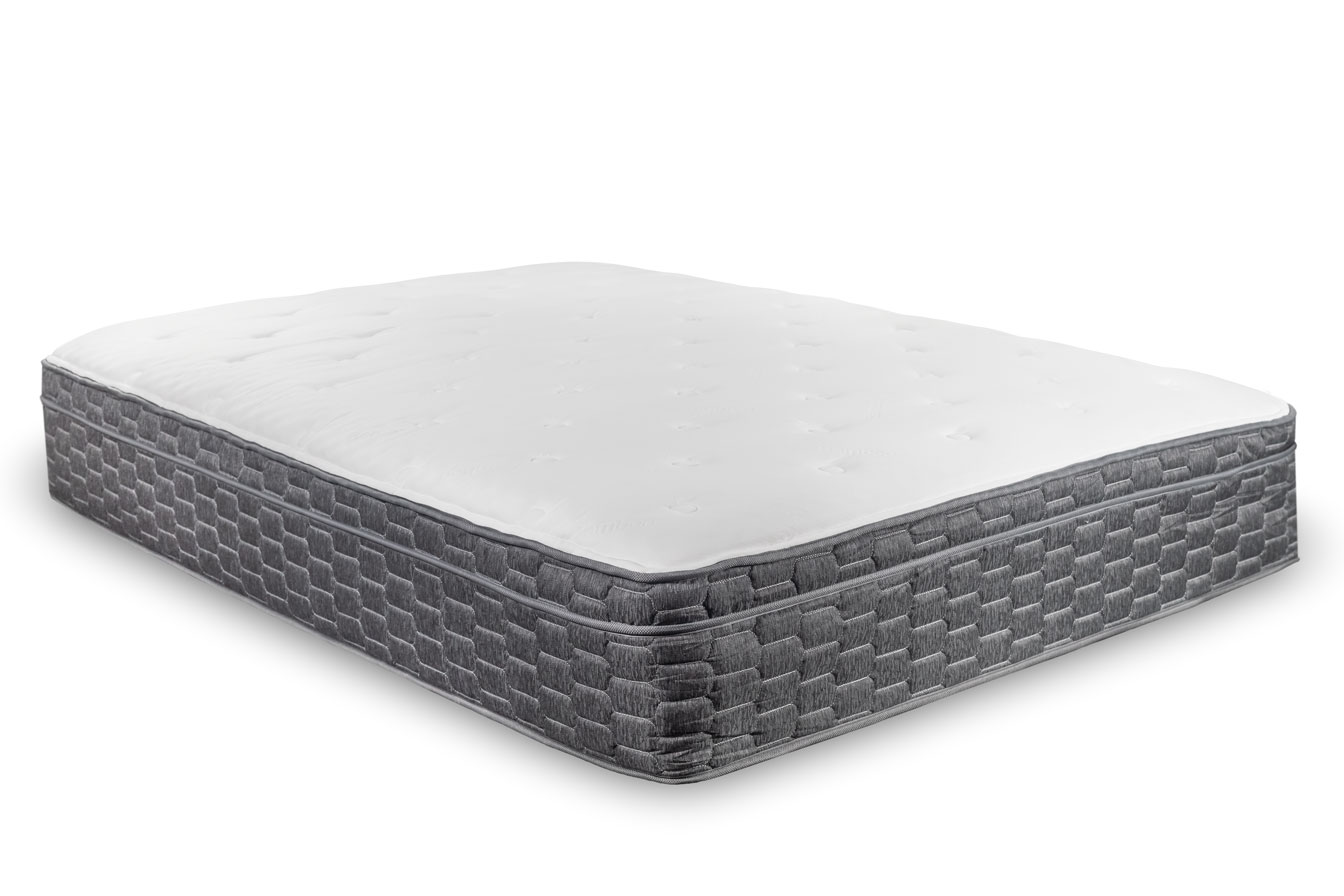Bed Smart 101
Don’t lose sleep over choosing a mattress. Discover the best mattress for side sleepers with hip pain. Also, find sleeping tips to alleviate hip pain.
It’s high time for a change! To make your nights serene and your mornings refreshing, we’ve compiled a list of the best mattresses explicitly designed for side sleepers with hip pain.
Discover how the right mattress can turn your sleepless nights into a soothing slumber. Your comfort is our mission. Bid farewell to hip pain and welcome restful sleep!
Best Mattress for Side Sleepers with Hip Pain (Our Top 3 Picks)
Find pain-free slumber with our top three picks for the best mattresses for side sleepers with hip pain.
No more tossing and turning – these choices deliver comfort, support, and relief to transform your nights.
1. Sealy High Point Plush Hybrid Mattress

Sealy High Point Plush Hybrid Mattress
Experience blissful sleep on the High Point Plush Hybrid Mattress by Sealy, a unique fusion of comfort and support.
Its fusion of high-density foams and Sealy’s pioneering Posturepedic Technology caters to your body’s unique contours, reducing pressure on your hips. The mattress’ softness is also perfect for side sleepers, offering elevated pressure point relief while maintaining spinal alignment.
Coupled with the Duo-Chill cooling system and gel-infused memory foam, it also ensures cool, comfortable slumbers.
Proudly crafted in the U.S.A. with CertiPUR-US certified foams and a 10-year warranty, it’s no wonder this is the #1 rated hybrid mattress.
Mattress Details:
- Price Range: $2,179 – $4,658 (Sale Price)
- Mattress Type: Hybrid
- Firmness: Soft
- Available Sizes: Twin Xl, Full, Queen, King, Split King, Cal. King
- Recommended For: Side sleepers who enjoy an innerspring mattress’s responsiveness
2. TEMPUR LuxeAdapt SOFT Mattress

Tempur LuxeAdapt Soft Mattress
Immerse yourself in a sleep haven with the Tempur-Pedic® TEMPUR-LuxeAdapt™ SOFT.
This extra-soft mattress is perfect for side sleepers experiencing hip pain. It conforms to your unique shape, providing personalized comfort and targeted support. It also ensures maximum pressure point relief and maintains your spine in a neutral position for a pain-free slumber.
In addition, the mattress features a removable cooling cover for a refreshing sleep experience. Discover why 95% of users would recommend this mattress, and let it redefine your sleep quality.
If you prefer a firmer mattress but want all the benefits of Tempur-Pedic’s LuxeAdapt line, look at the Tempur LuxeAdapt Firm mattress. It’s also an excellent choice for side sleepers with hip pain.
Mattress Details:
- Price Range: $3,699 – $7,698
- Mattress Type: Tempur Material
- Firmness: Extra Soft
- Available Sizes: Twin Xl, Queen, King, Split King, Cal. King, Split Cal. King
- Recommended For: Side and back sleepers with joint pain
3. Summit 500 Plush Mattress

Explorer 700 Pillowtop Mattress
Get balanced support, heat control, and pressure relief in one affordable mattress with the Explorer 700 Pillowtop. The cool plush feel and targeted support are ideal for side sleepers with hip pain.
We combined individually wrapped innerspring coils, high-density foam, gel memory foam, and our exclusive targeted lumbar layer to deliver reinforced support under the heaviest part of the body to prevent sagging over time, for even more support where it’s needed most.
If you prefer a softer sleeping surface, try the Explorer 700 Pillowtop.
Mattress Details:
- Price Range: $599.95 – $1,799.90.
- Mattress Type: Hybrid.
- Firmness: Soft.
- Available Sizes: Twin, Twin XL, Full, Queen, King, Cal. King.
- Recommended For: Side-sleepers on a budget.
What Type of Mattress Is Good for Hip Pain?
Generally, a medium-firm mattress can be an excellent choice for those with hip pain. The reasons are twofold:
- Balanced Support and Comfort: A medium-firm mattress balances comfort and support to maintain the natural alignment of your spine. It’s soft enough to contour your body and relieve pressure points but also firm enough to prevent excessive sinking.
- Alignment of Spine: Proper spinal alignment while sleeping is crucial for preventing and relieving pain, including hip pain. A medium-firm mattress can provide the right level of support to keep your spine aligned, regardless of your sleeping position.
Despite the general preference for medium-firm mattresses, it’s essential to remember everyone’s needs are unique. For example, the level of firmness depends on your weight, sleeping position, and personal comfort preferences.
It’s also a good idea to try different mattresses and consult with mattress experts to find the perfect fit for your needs.
Also Read: Mattress Shopping 101
How to Choose a Mattress for Hip Pain?
Selecting the perfect mattress can be a game-changer when alleviating hip pain. But navigating the vast sea of options can be challenging.
Here are buying tips to help you sail through your mattress selection:
Mattress Type
Understanding the type of mattress that best suits your needs is crucial. Memory foam and latex mattresses are known for their pressure relief and contouring abilities. In comparison, hybrid mattresses combine the benefits of springs and foam or latex.
Many different types of mattresses are on the market today, each with separate benefits. A few top choices to consider are:
- Innerspring mattresses
- Memory foam mattresses
- Hybrid mattresses
- Latex mattresses
- Gel foam mattresses
Also Read: 5 Types of Mattresses Explained (And How to Choose One)
Mattress Firmness
Do you like a soft bed or a firm bed? Most bed manufacturers offer a wide selection of mattress firmness to cater to your needs.
If you sleep on your side and experience joint pain, a medium-firm mattress can provide relief. However, stomach and back sleepers may benefit from a firmer, more supportive mattress.
BedMart offers various mattress comfort levels to meet your sleeping needs.
Sleeping Position
The position you like to sleep in can make a huge difference in what mattress will keep you comfortable.
For example, side sleepers often need a softer mattress to cushion their shoulders and hips. Conversely, back and stomach sleepers might benefit from a firmer mattress to support spinal alignment.
Body Support
A good mattress should provide adequate support, keeping your body level and promoting a neutral spinal position.
Good support is crucial for any mattress, regardless of its type or firmness. This is especially important for those with hip pain to prevent further discomfort.
Pressure Relief
Your mattress should distribute your body weight evenly to alleviate pressure points, particularly around the hip area. Memory foam and latex mattresses are especially good at this.
Spine Alignment
Maintaining proper spine alignment while you sleep is vital. Look for a mattress that keeps your spine in its natural alignment, preventing stress on your joints, including your hips.
Sleeping Temperature
If you sleep hot, consider a mattress with cooling properties. Some memory foam mattresses can retain heat. However, several modern beds have gel or copper infusions to relieve the heat.
Also, consider a latex or innerspring mattress. These mattress types are less likely to retain heat.
Mattress Price
Set a budget and stick to it. Expensive doesn’t always mean better. Research and compare different brands and models.
Find a mattress that provides the right blend of comfort, support, and value for money.
BedMart offers a variety of price points for price-conscious shoppers. Also, take advantage of our low-price guarantee that lasts 30 days after you take your new mattress home.
Warranty and Sleep Trial
Always check for a sleep trial, allowing you to test the mattress in your home to ensure it’s a good fit. Also, a solid warranty protects your investment, offering peace of mind.
Also, familiarize yourself with the mattress’s specific warranty. A ten-year warranty protects your investment, offering peace of mind. However, actions like using an improper foundation can void the warranty early.
How to Relieve Hip Pain While Sleeping?
If hip pain is robbing you of a good night’s sleep, don’t despair. You can turn those painful nights into peaceful slumber with a few adjustments.
Here’s your guide to better, pain-free rest:
Change Your Sleeping Position
How you sleep can directly impact hip pain. Changing your sleeping position can offer relief.
- For side sleepers, switch to the opposite side of your pain.
- If you’re a back sleeper, try placing a small pillow beneath your knees to maintain natural spinal curvature.
Find the Best Mattress Topper for Hip Pain
A mattress topper can add extra cushioning and pressure relief if your mattress is too firm. Look for memory foam or latex toppers. They offer excellent contouring and pressure point relief.
Use Pillows for Pain Relief
Positioning your pillows strategically can help alleviate hip pain.
- For side sleepers, a pillow between the knees can keep your hips aligned.
- For back sleepers, a pillow under the knees can reduce stress on your lower back and hips.
Try Hip Stretches Before Going to Bed
Incorporating hip stretches into your nighttime routine can also help loosen tight muscles and relieve discomfort. Try gentle yoga poses or simple stretches targeting the hip area.
However, stretches may not be a great solution if your bed is causing your hip pain.
Note: What works for one person may not work for another. It’s all about trial and error. Determine what techniques best help you manage your hip pain for a restful sleep. Also, consider consulting with a healthcare provider if your pain persists or worsens.
Shop Mattresses for Hip Pain at BedMart
Put your struggle with hip pain to rest by investing in the right mattress. For side sleepers grappling with hip pain, we’ve got your back (and your hips too)!
We offer an extensive range of affordable mattresses tailored to your unique needs. Trust our expertise and personalized service to guide you to the perfect mattress.
Say yes to comfort, support, and pain-free sleep. Take the first step towards better rest and improved health. Visit Bedmart today because the solution to your hip pain could be just a mattress away!
Best Mattress for Hip Pain FAQ
Answers to common questions about sleeping with hip pain.
Can a Mattress Cause Hip Pain?
Yes, a mattress can contribute to hip pain. Here’s how:
- Lack of Support: A sagging or worn-out mattress might not provide enough support. This can lead to misalignment of your spine and hips, which could result in pain.
- Wrong Firmness Level: A mattress that is too soft or too firm for your specific needs can create pressure points, causing discomfort in your hips.
- Old Age: Mattresses typically have a lifespan of 7-10 years. An older mattress may lose its ability to provide adequate support and pressure relief, leading to hip pain.
Consider a replacement if you’re experiencing hip pain and your mattress is old or uncomfortable.
Is a Firm or Soft Mattress Better for Hip Pain?
Regarding hip pain, a medium-firm mattress often strikes the best balance. A mattress that’s too soft may cause misalignment, while one that’s too firm can create pressure points.
However, your personal preferences, body weight, and sleeping position can influence the best choice. The key is finding a mattress that provides comfort and support tailored to your unique needs.
What Is the Best Sleeping Position for Hip Pain?
Sleeping on your back can provide relief if you suffer from hip pain. Back sleeping distributes your body weight evenly, preventing undue strain on your hips and joints. However, if you’re a side sleeper, place a pillow under your knees for added comfort and optimal spinal alignment.